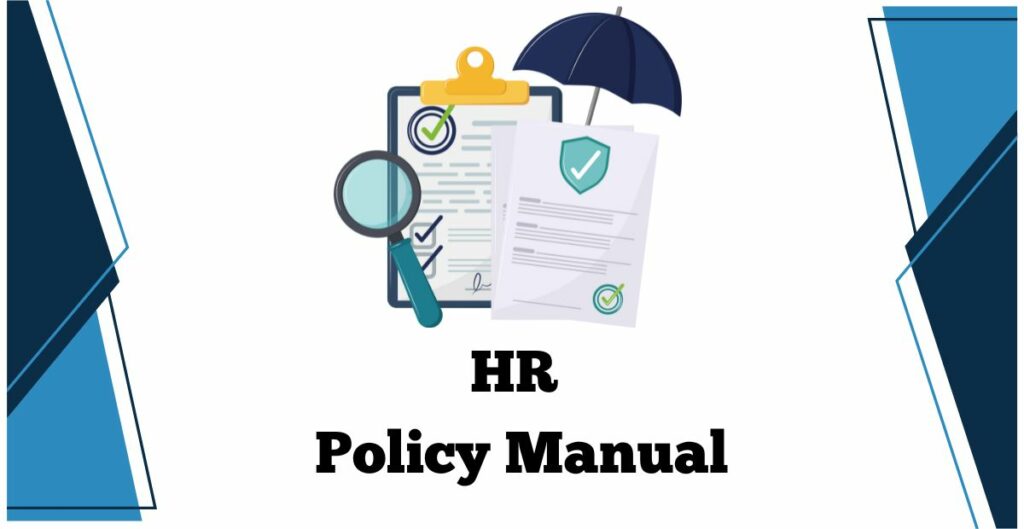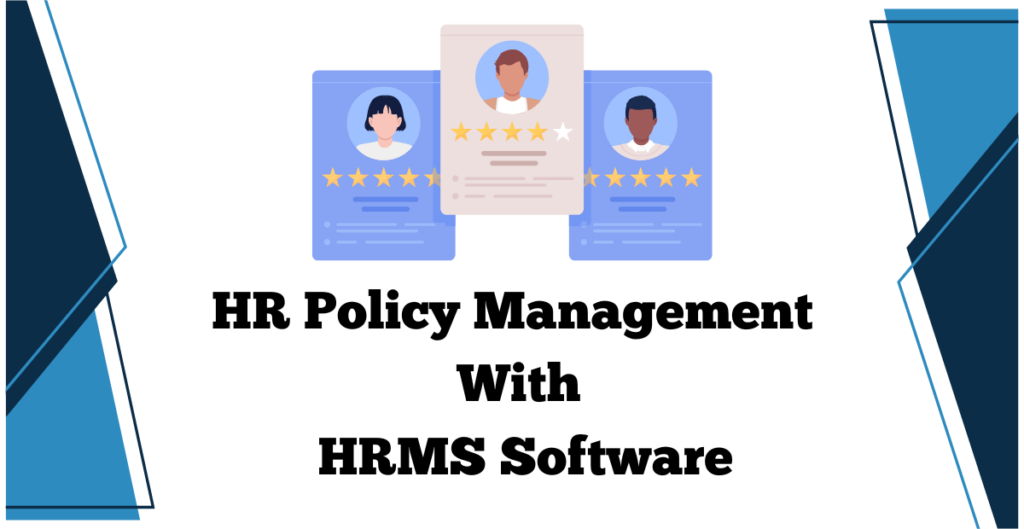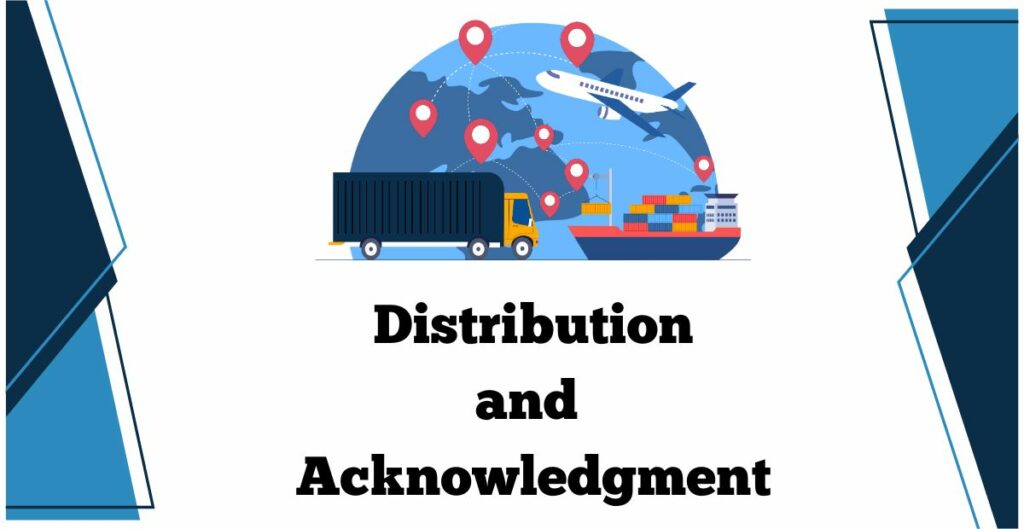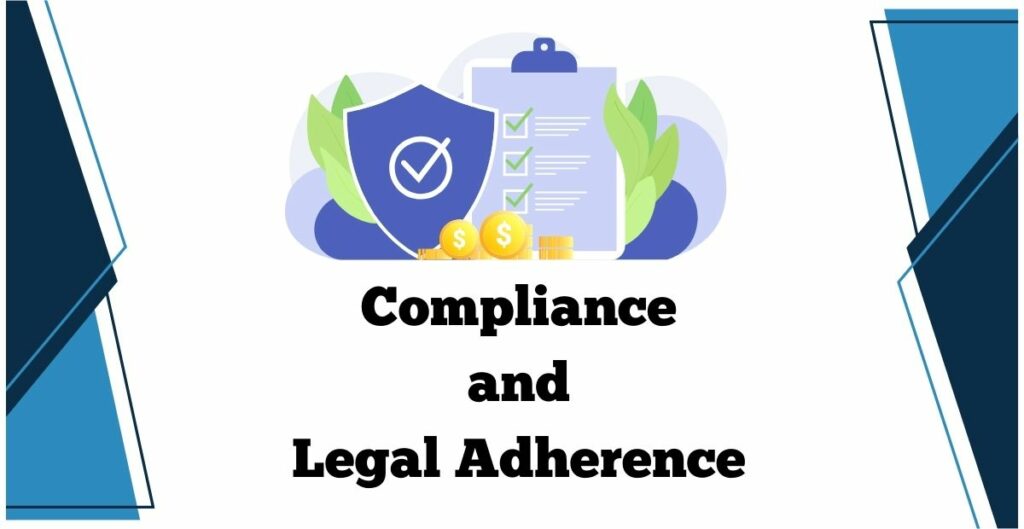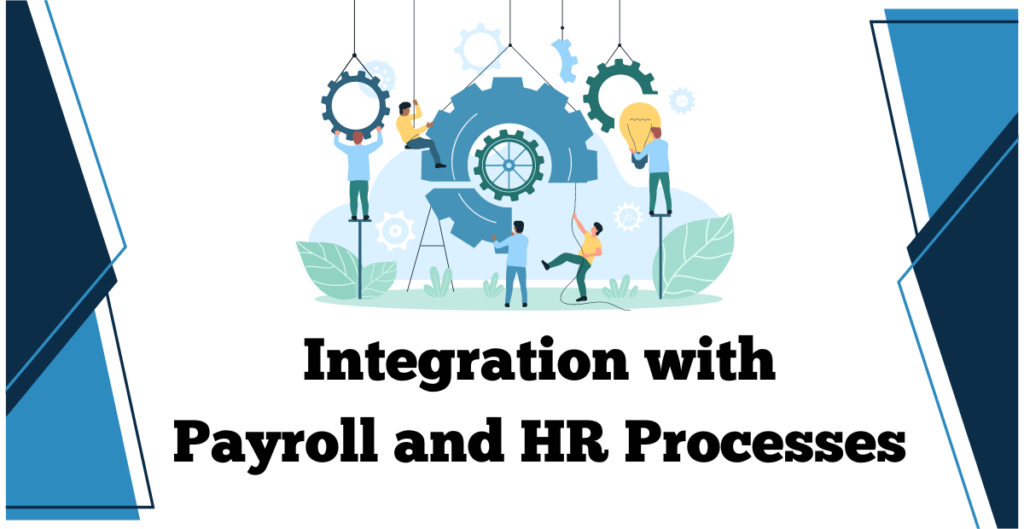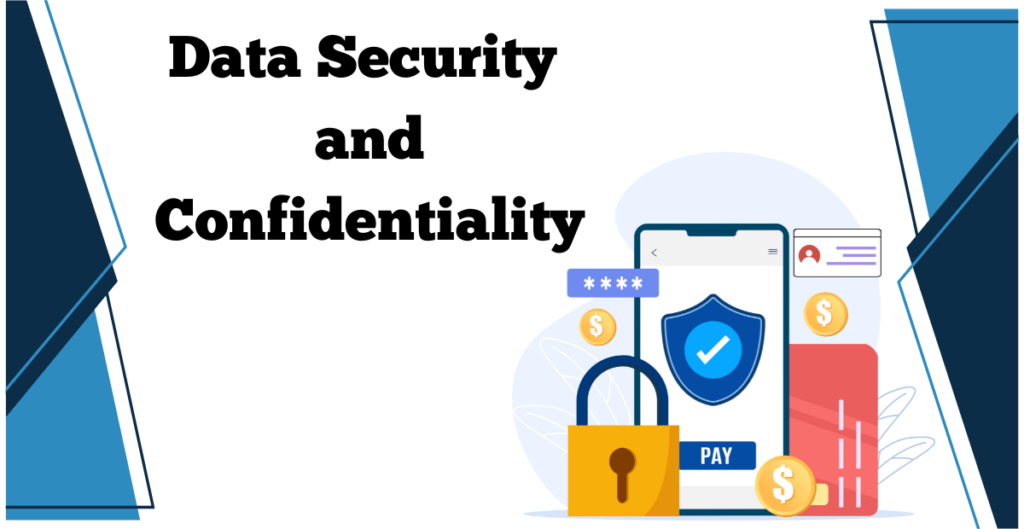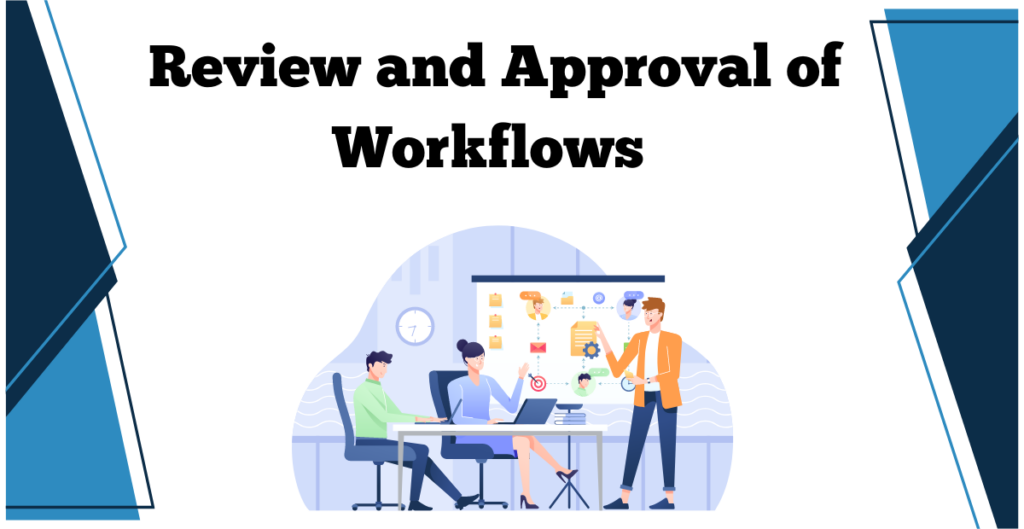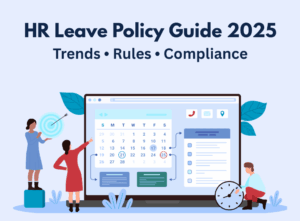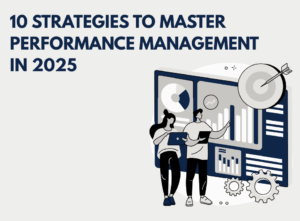HR Policy Manual Management with HRMS Software
Introduction to HR Policy Manual in the Digital Age:
By the day in the current fierce competitive situation business organizations have to exploit many complicated HR policy manual management issues. Nonetheless, there are two most challenging and significant practical tasks – the preservation and the spread of HR policy manuals among them. Earlier, such HRM policy manuals were recruited through physical binders which were difficult to maintain and distrusted and also difficult to distribute and manage among employees.
Then, the Digital age radically changed the process of making and carrying out HR policy manuals in organizations. Today, companies can implement human resource management systems (HRMS) for efficient management of HR policy manual processes and enjoy the benefits of highly sophisticated technology to the fullest.
Benefits of Integrating HR Policy Manual Management with HRMS Software:
- Centralized Repository: All HR policy manuals are consistent with each other and are placed in a single common location, making it easier to browse among them rather than manually searching through different documents or folders.
- Real-time Updates: Policies can be easily helped update in the short run within the system and therefore, their employees will always get the latest information on time which is crucial in a dynamic regulatory zone.
- Improved Compliance: Automated benchmarking checks make sure that policies are in line with the latest legal climate to avoid compliance issues by reducing the risks of a lawsuit by your company.
- Efficient Distribution: Through Ia HRMS software the distribution process is automatized and notifications are being distributed to all the employees about policy updates, and on-time information across the organization.
- Enhanced Tracking and Reporting: Tracking system robustness discriminates the rate of comprehension and evaluation of rules by HR professionals, resulting in actionable intelligence for improvements.
- Integration with Other HR policy manual Processes: Policies are applied to all activities such as onboarding, training, and performance management. This keeps everything consistent and aligned with all areas of HR.
Automating Policy Distribution and Acknowledgment
Efficient Distribution of Policy Updates Across the Organization:
Prompt and ubiquitous distribution of policy updates is inconceivable to get all the staff informed about the current details. Now, set policies will streamline the distribution of new information from the HR department to all relevant employees using HRMS software. This makes manual distribution methods of files like email and print memos unnecessary and eliminates the possibility of documents being misplaced saving time. The HRMS platform makes policy changes be published in the dashboards of employees with email notifications as an alternative or all at once guaranteeing rapid and wide dissemination all across the organization.
Tracking Employee Acknowledgment and Compliance:
Ensuring consistent compliance of employee behaviour with the updated policies and making their use mandatory is the next step. This is important for guaranteeing the public corporation’s compliance with laws and rules within and outside of the organization. Through HRMS software, the issue of controlling employee alignment by providing a suite of instruments for monitoring employee acknowledgement and compliance in real-time is simplified. Next, these policies would have to be updated, and employees, whereupon these updates, are to acknowledge their understanding and acceptance by way of the HRMS platform. On the other hand, human resource professionals can track compliance with the messages through easy-to-read dashboards and reports. Such a scenario fosters due vigilance through regular monitoring and identification of compliance issues. Hereafter, remedial measures such as additional training or reinforcement can be put in place where necessary for compliance. The HRMS software provides another kind of tool which is for recording as well as documenting the acknowledgement record so that there is the ability to review the same power document All in all, automating the assessment of employee acknowledgement and compliance will help with the execution of the HR policy manual and thus a culture of compliance will be created effectively in the organization.

Ensuring Compliance and Legal Adherence
Automated Updates to Stay Compliant with Changing Regulations
Through HRMS software, the process of keeping the employees informed about new regulations becomes automated – a practice that should take the place of the one in which the owner’s HR department is burdened with such tasks. Even if the hiring is done through the growing staffing firm, HR tasks are hassle-free and automated. The system clock that is always on helps to keep the policies up to date and compliant because they continue to monitor the legal requirements. This preventive method causes a loss of time and a more likely chance of not getting compliance, thus the organization gets to be compliant with the change in the regulatory landscape.
Audit Trails and Documentation for Legal Purposes:
HRMS software is equipped with the recording capacity of constructing audit trails with plenty of data on policy revisions, that is, on each change that has been made to the HR policy manual. Information like the date, time, and a specific user that has modified the data (the modification history) is recorded in these audit trails. This precise documentation not only makes it possible for legal bodies to establish compliance but also provides a measure of accountability in the management of ongoing policies. Moreover, HRMS platforms endow improved protection of sensitive data and access controls, which in turn allow the creation of secure storage and maintain compliance with data protection laws.
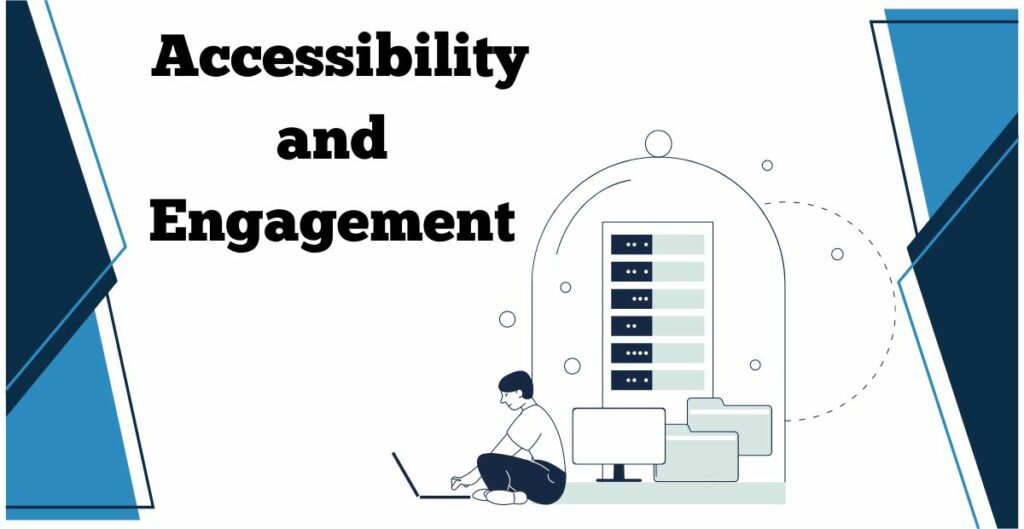
Employee Accessibility and Engagement
Employee Accessibility:
One of the pressing issues corporate management is likely to face is promptness in the retrieval of company policies by the employees whenever they require that. No longer only an HR hassle, it is currently much more manageable due to the emergence of HRMS software. These platforms do not only decentralize the policy repositories, but they make them central, employees thus have them all in one location for their policy-related questions. No longer, the employees are not supposed to be stuck with stacks of paperwork or any task, or lost expertise by visiting different types of digital folders. Rather than going through a lengthy and exhausting process, payers, providers, and patients can face hassle-free access to policies, which will save them precious time.
Enhancing Employee Experience with Accessible Policy Libraries:
Whether using hardcopies, in any language, or electronic portals, our easy-to-use policy libraries will revolutionize the employee experience. Those libraries have interfaces that are easy to use to converge converging policies with efficiency and simplicity. Employees will be able to browse through different categories such as vacation time, health, and pensions. They will also customize their experience by choosing what are the most relevant policies for them. It can be in the form of bookmarking those policies that are frequently visited by them or getting notifications about policy updates; all in all, through HRMS software the employees get to take the power in their hands and thereby use it in the best possible way to meet their requirements.
Increasing Understanding and Adherence:
Authentically sustainable tourism is, nonetheless, more than that. Also, the roles of employees include acquainting themselves with the company’s guidelines and following them. At this point, is where the interactive platforms come into precise use. Running an HRMS software means you can use the multitude of its interactive and digital features including such as multimedia presentations, interactive training modules, and feedback mechanisms to increase employee understanding and acceptance.
Interactive Platform:
For organizations that want to catch a wide range of audiences through multimedia, it would be appropriate to use videos and infographics, because these elements make policy content more attractive and accessible for everyone to understand. Interactive training programs like the ones just mentioned do not stop there, they take it a step forward by having employees test their knowledge through quizzes and simulations. This makes the interaction between the user and the policy tool not only active but also results in a stronger recall of policy concepts which then leads to a better comprehension and adherence of policy concepts by the learner.
Integration with Payroll and HR Policy Manual Processes
In modern-day organizations, HR departments are busy executing complicated jobs, involving the development of the HR policy manual related, paperwork related to payroll administration, and employee induction process (onboarding). Integration of HR policy manual management with payroll and onboarding processes is solved through HRMS software by leveraging to streamline processes and maintain legal perspective. Let’s get into it and talk about how this integration operates and the advantages of controlling the compliance checks and employee data administration.
Connecting HR Policy Manual Management with Payroll and Onboarding Processes:
As a rule, HR policy manual management, payroll processing, and regulation of new employees have not overlapped with each other like in today’s organization. However, by uniting these processes via HRMS, companies have the opportunity to create slick interaction and data transfer between all of HR functionality. With the integration of these tools, HR managers will be able to take a comprehensive approach to their management, in which policy changes will be automatically transmitted to the payroll as well as to the onboarding process, thus providing necessary consistency and a certain degree of maintenance.
Streamlining Compliance Checks:
One of the crucial advantages of the reality that HR policy manual management is connected with payroll and onboarding processes is the possibility of producing inquiries in a single click. Fixing compliance checks is one of the key elements of HRMS software. It refers to the software checking compliance rules by providing the data of payroll, onboarding information, and HR policy manual to the rule System. For citation, one could use a policy change as an example where the system updates the payroll calculations automatically to account for new benefits or taxes. Not only will this automation reduce the chances of incorrect information, but you will also be certain that your company complies with existing laws and corporate standards.
Employee Data Management:
The main factor of a unified organization is the centralization of human resource data management. After human resources management software (HRMS) has been adopted for the effective delivery of employee information, there is a reduction in duplication of data and inconsistencies. The HR policy manual management system is a platform that serves all HR tasks such as standardizing policies, managing payroll details, and documentation involved in onboarding, and this is done securely. Additionally, the centralized model of data collection not only moderates the data administration but also significantly contributes to data security keeping in mind that access to sensitive data can be better controlled and tracked.
Data Security and Confidentiality
Ensuring Secure Access to Sensitive Policy Information:
As a rule, the human resource policies in the policy documents typically include confidential information, for example, employee files, compensations, and disciplinary actions. Thus, it’s more necessary to reinforce security mechanisms that would not allow anyone to get access without authorization and to prevent the exposure of this private information through cyberattacks or leaks.
The HRM software provides key functions that make sure that only confidential policy information can be accessed securely. Organizations can offer access to policy documents only to users relevant by implementing access controls and user authentication mechanisms where user roles and permissions are attached. Therefore, the designated security protocols limit access to the key policy documents to only HR managers and department heads. Hence, the confidential information is safeguarded from unauthorized leakage.
For this reason, HRMS systems also provide encryption to guarantee the documents are safe while they are transmitted or stored by the data safeguard features. Encryption makes the data in an unreadable format, thus, this would render the data meaningless to unauthorized users who might try to spy on it during transmission or even store it on a server. This implementation restricts the limited access to the governmental policy libraries by making them secure against external dangers.
Compliance with Data Protection Regulations:
Furthermore, organizations should mirror this trend by ensuring that they remain in compliance with relevant data protection legislation as failure to do so can typically lead to a situation in which they are faced with legal repercussions or brand damage. Data privacy laws like the GDPR in the EU and the HIPAA in the US have poor requirements for collecting and managing personal information.
HRMS tools are instruments that enable organizations to get into the side with the regulations on data protection and they include a data encryption feature, audit traps, and the compliance reporting aspect. These characteristics ensure that organizations are capable of demonstrating accountability as well as transparency of the data management measures, which is what is necessary for regulatory requirements.
In addition, HRMS systems usually go through security audits regularly when it comes to compliance with industry standards and certifications regarding data security. Through the deployment of legitimate HRMS software, businesses can reduce the risk exposure and prove their desire to defend qualified policy resources.
Efficient Policy Review and Approval Workflows
Importance of Efficient Workflows:-
- Two things must be around for a timely and relevant HR policy manual to be there. They are proper review and approval workflows.
- They ensure that policies are assessed, revised, and adopted in a proper way enhancing the probability that the policies are up to date and compliance.
Collaborative Review Processes:-
- The collaborative reviewing methods vary from one company to another. They involve a multitude of stakeholders and often include HR policy manual managers, lawyers, and department heads.
- The major players and stakeholders are responsible for offering suggestions and feedback which the organization reads to decide if the policies they are developing are literal and accurate and whether or not they correspond or harmonize with the business objectives.
Benefits of Collaboration:-
- Collaboration facilitates openness and diversity, giving a chance to different points of view to be included in policy making.
- It upgrades the quality of policies by integrating the views of stakeholders, hence, to more beneficial and all-round policies.
Facilitating Collaborative Policy Review Processes:-
Clear Communication Channels:
- Through human resource management systems software, stakeholders get a platform for the implementation of policy reviews as they get a clear communication channel to work together.
- Features like discussion forums, comment sections, and messaging tools offer participants an opportunity to freely interact and give each other feedback.
Version Control and Tracking:-
- HRMS platforms are educted to version control which tracks all the changes and revisions done to policies.
- Observers could see the later editions cover the originals, track the edits, and even recognize the contributors as this brings validity and is public.
Task Assignment and Notifications:-
- HRMS software allows the assignment of the team members to their tasks as well as notifications to send messages to the stakeholders indicating what they are supposed to do.
- Automated reminders, notifications, reports as required, and making sure that all is done on time and all are aware are the methods that reduce the delay and overlook the jobs.
Automated Approval Workflows for Policy Changes
Streamlined Approval Processes:-
- An automated approval workflow helps to make the procedure of reviewing and approval of changes to the policy compact.
- Prior-denoted workflow route policies are to be inspected by the appropriate stakeholders for subsequent review and approval in line with the predefined criteria and hierarchical structures.
Conditional Routing:-
- HR software permits conditional routing and the issue of policies dependent on defined conditions and criteria are forwarded to avail stakeholders.
- For instance, legal policies might need clearance from the legal ones, while department-specific policies may require approval from the use of department heads.
Real-time Tracking and Monitoring:-
- Automated approval workflows provide real-time tracking and monitoring of policy approval status.
- Stakeholders can track the progress of policy reviews, identify bottlenecks, and take corrective actions to ensure timely approvals.
